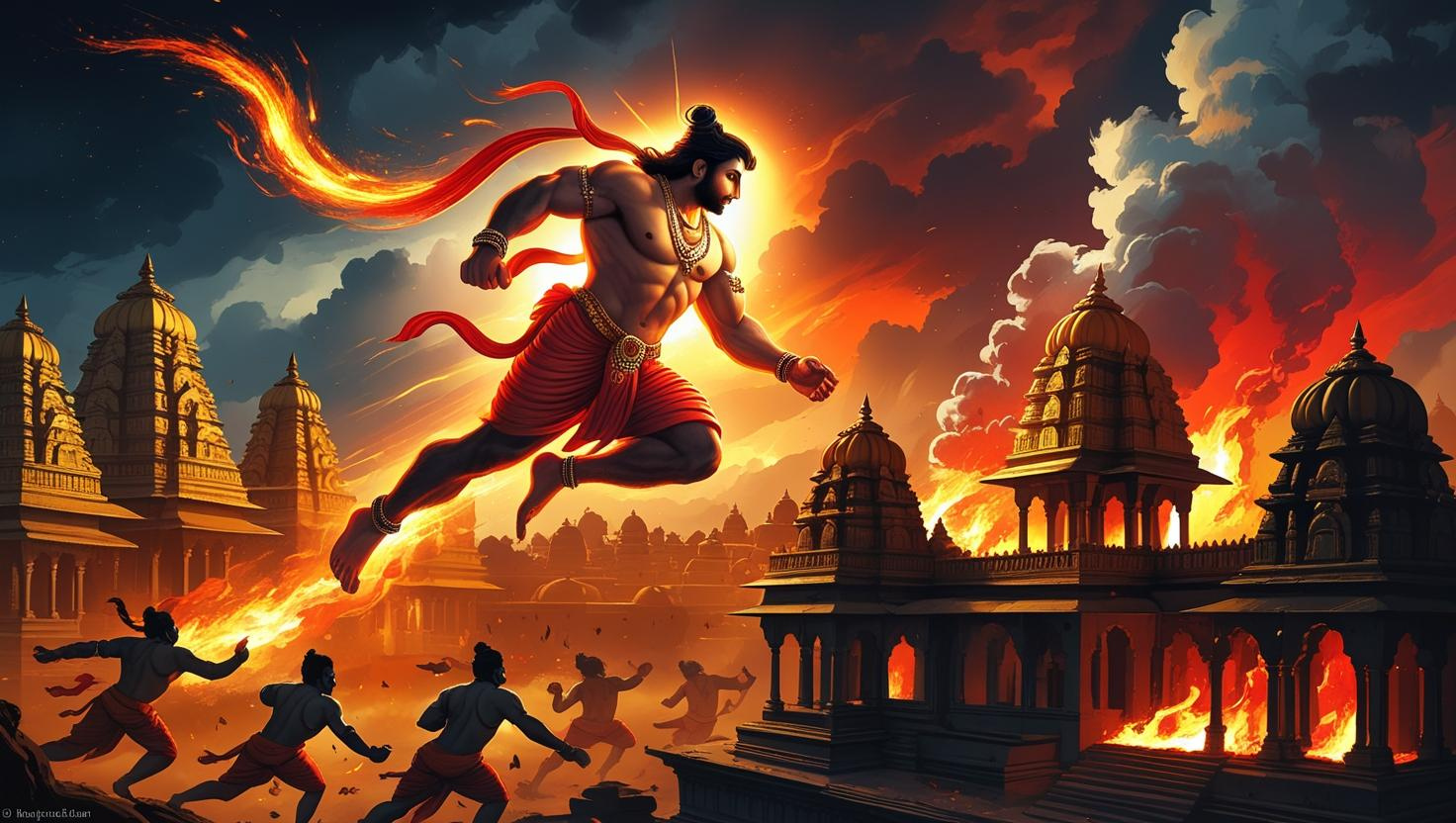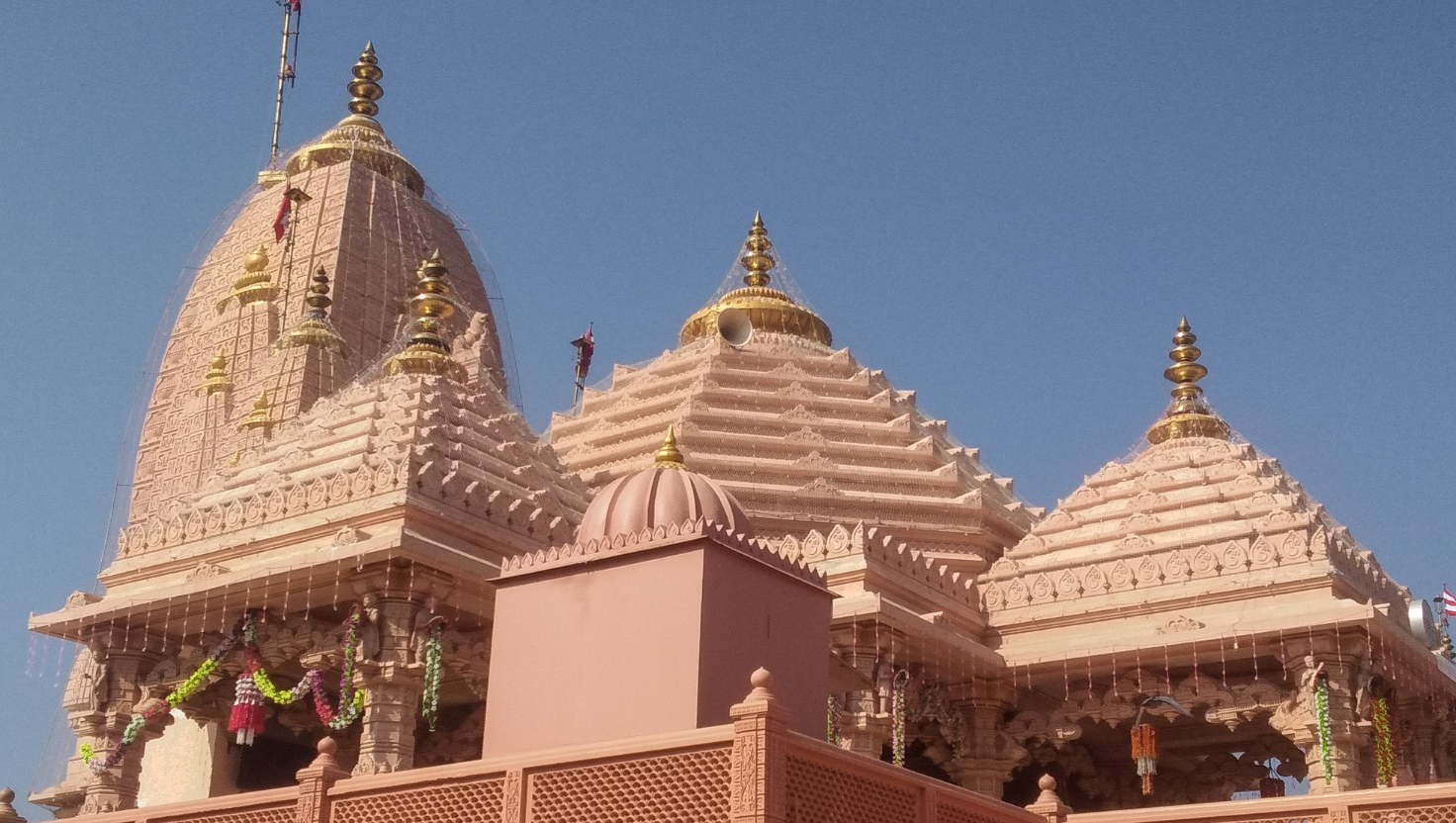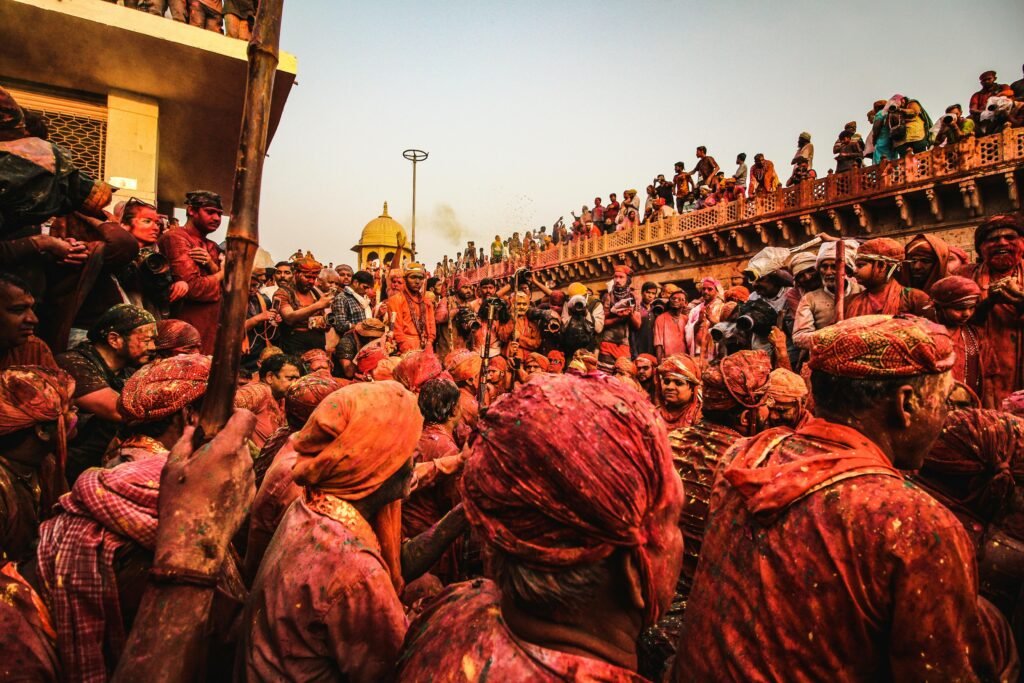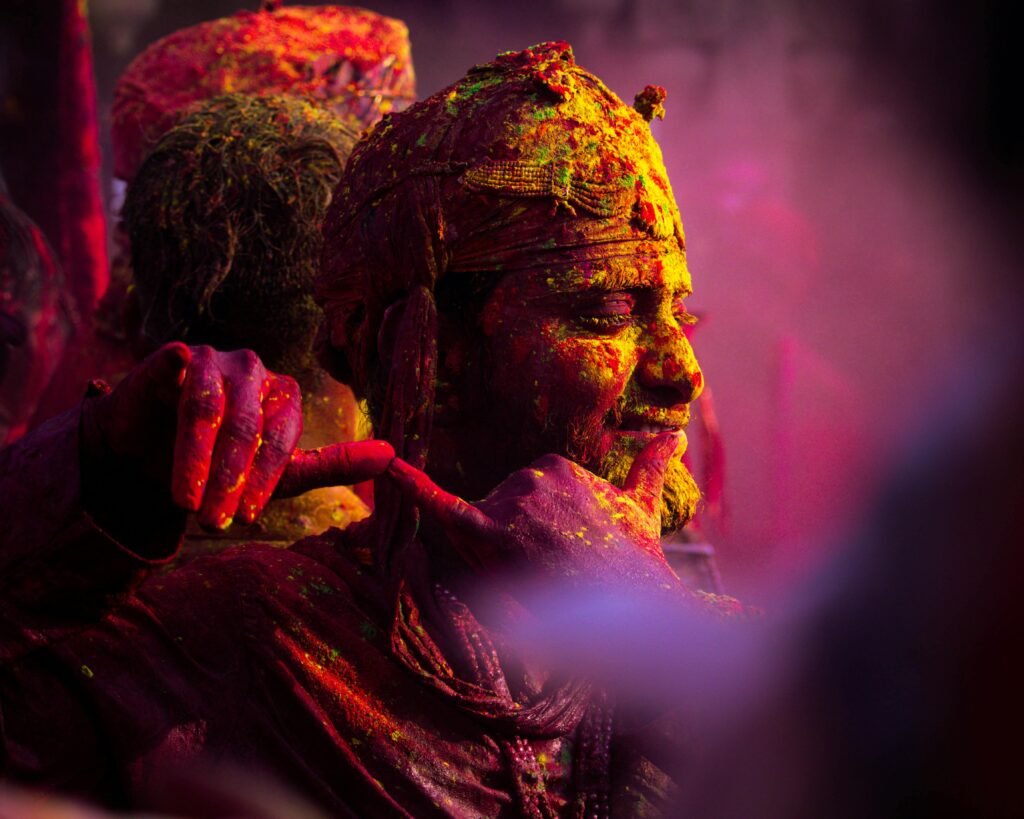
Introduction
The Ramayana is a story many love and cherish. Yet, some people see it only as a myth or legend. You might have heard skeptics say it’s just an ancient tale, not real history. But what if there is more to it? What if the Ramayana is actually rooted in real events and places? This blog will share 9 well-researched proofs that show the Ramayana is not just a story but true history.
From ancient temples to natural wonders like Ram Setu, these pieces of evidence connect the epic to real-world places. Scholars, historians, and devotees have studied these sites carefully. Many of them find surprising facts that support the Ramayana’s authenticity. For example, archaeological findings in Ayodhya and Sri Lanka match descriptions from the scriptures.
You’ll discover how legends, local traditions, and geography all add to the story’s truth. And for those who want to dive deeper, the Divya Kripa app is a perfect companion. It offers daily darshan, bhajans, and full access to the Ramayana scripture. So, you can connect spiritually while exploring the fascinating Ramayana historical evidence.
Get ready to explore this epic like never before—through stories, facts, and devotion combined!
Proof 1: Ram Setu / Adam’s Bridge
One of the most famous pieces of Ramayana historical evidence is the Ram Setu, also called Adam’s Bridge. This natural chain of limestone shoals lies between Rameshwaram in India and Sri Lanka. According to the Ramayana, Lord Rama’s army of Vanaras built this bridge to reach Lanka and rescue Sita. The legend says the stones floated on water because of the sacred power of Rama’s name!
Scientists have studied the Ram Setu and found it to be around 7,000 years old, which matches the time frame many believe the Ramayana took place. Satellite images clearly show the bridge-like formation. Some even argue it is man-made, proving the epic’s events are not just myths but connected to real history.
If you want to see this incredible site for yourself, the Divya Kripa app offers a detailed temple guide and travel tips for Rameshwaram and nearby sacred places. It helps you plan your pilgrimage smoothly.
For daily darshan, devotional bhajans, and to read the full Ramayana scripture, the Divya Kripa app is your perfect companion. It keeps your spiritual journey connected while you explore these amazing historical sites.
Proof 2: Mysterious Cobra-Hood Cave in Sri Lanka
One fascinating piece of Ramayana historical evidence lies in Sri Lanka—a natural cave shaped like a cobra’s hood. Locals call it the Cobra-Hood Cave because its unique formation resembles the hood of a snake, an important symbol in Hindu mythology.
Inside this cave, ancient paintings and carvings depict scenes believed to be from the Ramayana era. These artworks show figures resembling Rama, Sita, and Hanuman, linking the site directly to the epic. The cave’s remote location matches descriptions from the Ramayana of secret hideouts used during the battle in Lanka.
Archaeologists and historians use maps and satellite data to confirm the cave’s exact location near the Ashok Vatika region, where Sita was held captive. The natural cobra shape is seen by many as a divine sign, reminding devotees of protection and spiritual power.
You can explore these mysterious places with ease using the Divya Kripa app. It offers detailed temple guides and maps that help you plan your pilgrimage with confidence.
Proof 3: Panchavati Near Nashik

During his 14-year exile, Lord Rama is said to have stayed in Panchavati, a sacred forest near present-day Nashik. This place holds a special place in Ramayana historical evidence because it connects the epic’s stories to real geography.
Today, Nashik is home to several ancient temples linked to Rama, Sita, and Lakshmana, including the famous Kalaram Temple. These temples mark spots where key events from the Ramayana, like the encounter with the demoness Surpanakha, took place. Pilgrims visit Panchavati to experience the spiritual energy that comes from walking where Rama once did.
If you want to explore Panchavati’s Ramayana sites easily, the Divya Kripa app is a great help. It provides detailed temple guides, travel tips, and exact locations so you never miss an important spot. The app also offers live darshan and devotional bhajans, making your pilgrimage spiritually enriching. To learn more about Live or Daily Darshan on app, read our blog.
Using Divya Kripa, you can deepen your connection with the Ramayana’s history and legends, all while planning your visit smoothly. It’s a perfect companion for any devotee or history lover seeking authentic Ramayana historical evidence.
Proof 4: Lepakshi & Jatayu’s ‘Le Pakshi’
One intriguing piece of Ramayana historical evidence is the ancient temple at Lepakshi, in Andhra Pradesh. This site is deeply connected to the legend of Jatayu, the mighty bird who bravely fought Ravana to save Sita. The name “Lepakshi” itself means “Le Pakshi” or “The Flying Bird” in Telugu, honoring Jatayu’s heroic sacrifice.
The Lepakshi temple is famous for its stunning Vijayanagara architecture and beautiful murals. It stands as a living testament to the Ramayana’s rich history and devotion. Pilgrims often visit this temple to pay respects to Jatayu’s courage and feel spiritually connected to the epic’s divine tales.
If you’re planning a visit, the Divya Kripa app is your perfect guide. It lists the Lepakshi temple among its curated holy sites and offers detailed information on timings, rituals, and nearby attractions. The app also streams live darshan and devotional bhajans, making your spiritual journey seamless and fulfilling.
By exploring Lepakshi through Divya Kripa, you step closer to the real places that make the Ramayana come alive, blending faith with Ramayana historical evidence.
Proof 5: Footprints of Hanuman & Sanjeevani
One of the most captivating pieces of Ramayana historical evidence is the footprints of Lord Hanuman, found in both Sri Lanka and the Himalayas. These footprints are believed to be marks left by Hanuman during his heroic journey to find the Sanjeevani herb to save Lakshmana’s life.
In Sri Lanka, near the foothills of the mountains, you can see large footprints carved into rocks. Locals and pilgrims consider these sacred reminders of Hanuman’s strength and devotion. Similarly, in the Himalayas, the Sanjeevani Mountain is believed to be the place where Hanuman picked the life-saving herb.
These footprints and the legendary Sanjeevani mountain connect the epic’s stories to real-world locations, strengthening the case that the Ramayana is more than just myth. They inspire millions to believe in the power of faith and courage.
If you want to explore these sacred sites, the Divya Kripa app can guide you with accurate maps and temple information. Plus, it offers live darshan and devotional bhajans to keep your spiritual energy high during your journey.
Discover how these footprints and mountains keep the Ramayana’s magic alive as true history and divine proof.
Proof 6: Black Soil & Ramayana Burn Events

One amazing piece of Ramayana historical evidence is the presence of blackened soil in parts of Sri Lanka. This soil is believed to be the result of the fiery event when Hanuman set Lanka ablaze with his burning tail. According to the epic, Hanuman’s tail was set on fire by Ravana’s soldiers, but Hanuman used this to burn down parts of the demon king’s fortress.
Scientists have studied patches of black soil in the region, which show signs of ancient burning. These findings support the legend and provide a natural clue connecting the Ramayana story to real events. This fiery episode symbolizes Hanuman’s courage and devotion to Lord Rama, inspiring millions even today.
When you visit Sri Lanka, you can explore these historic spots and feel the epic’s energy firsthand.
With these proofs, the Ramayana’s stories become living history, filled with devotion and awe-inspiring miracles.
Proof 7: Ashok Vatika & Sita’s Sites
One of the most touching parts of the Ramayana is Sita’s captivity in Lanka. This is where the Ashok Vatika and Sita Kotuwa sites in Sri Lanka become vital pieces of Ramayana historical evidence. Ashok Vatika is believed to be the beautiful garden where Sita was kept under guard by Ravana’s forces. The site still has lush greenery and ancient ruins, reminding visitors of the epic’s vivid scenes.
Near Ashok Vatika lies Sita Eliya, a sacred area with gardens and temples dedicated to Sita. Locals and pilgrims believe these places mark where Sita prayed and awaited rescue. The “Sita Kotuwa” or Sita’s fortress is another nearby historical site tied to her story.
These places are not just legends but living parts of Sri Lanka’s cultural heritage. Archaeologists have found ancient structures and artifacts that match the Ramayana’s descriptions.
Through Ashok Vatika and Sita’s sites, you can see how the epic’s story is woven into real places and hearts alike.
Proof 8: Archaeological & Literary Synchrony
The Ramayana is not just a single story; it appears consistently across many ancient scriptures. From the Vedas and Puranas to the Tamil Sangam literature, references to Rama’s life and deeds show the epic’s deep roots in Indian culture. This literary harmony strengthens the case for genuine Ramayana historical evidence.
Scholars like P.V. Vartak have used astronomical data from the Ramayana to estimate its time period. According to Vartak, the events likely occurred around 5000 years ago, based on planetary positions described in the text. This gives a fascinating scientific angle to the epic, connecting mythology with history.
However, modern archaeology has yet to fully uncover definitive physical evidence from that era. This has not stopped historians and devotees from believing in the Ramayana’s truth. Many spiritual seekers say that faith and scripture together form the strongest proof.
So, whether through ancient texts or cosmic clues, the Ramayana’s historicity continues to inspire and amaze millions worldwide.
Proof 9: Ayodhya & Archaeological Corroboration

Ayodhya, the birthplace of Lord Rama, is one of the strongest pillars of Ramayana historical evidence. Archaeological excavations reveal that this ancient city dates back thousands of years. Findings include ruins of temples and artifacts matching descriptions from the epic. Nearby, Hanuman Garhi stands as a revered temple dedicated to Hanuman, believed to protect the city since Rama’s time.
In Panchavati, near Nashik, inscriptions and donations from the Yamuna era have been discovered. These donations show the long-standing spiritual importance of the region, linking it to the Ramayana’s exile period. Such findings are supported by discussions on platforms like Hinduism Stack Exchange and research by Sanjeevini Peetam, which document temple histories and archaeological data.
If you want to explore these sacred places, the Divya Kripa app is your perfect companion. It helps you track temple histories, offers live darshan, and shares detailed stories behind each site. This app makes your pilgrimage easier and spiritually enriching.
By visiting Ayodhya, Hanuman Garhi, and Panchavati with Divya Kripa’s guidance, you walk through history. You experience firsthand the living proof that the Ramayana is more than a tale—it’s a true spiritual and historical journey.
Skeptical Viewpoint & Balanced Analysis
While many see strong Ramayana historical evidence, some experts remain skeptical. They argue that the famous Ram Setu may be a natural formation, not man-made. Geological studies suggest the bridge is a result of natural processes like sedimentation and coral growth over thousands of years. These experts caution against viewing every legend as literal history.
But whether natural or man-made, the Ram Setu holds deep cultural and spiritual meaning. For millions, it is a symbol of devotion, courage, and divine intervention. The story of Rama’s journey inspires values that transcend time. Belief in the Ramayana is not just about proving facts—it’s about connecting with ancient wisdom and living those teachings today.
So, even if some questions remain, the Ramayana continues to unite hearts. Its lessons and legends shape culture, faith, and identity—making it much more than just a myth or history book.
Conclusion
We’ve explored 9 fascinating proofs that show the Ramayana is much more than just a myth. From the mysterious Ram Setu between India and Sri Lanka to sacred sites like Panchavati, Lepakshi, and Ashok Vatika, each place holds strong Ramayana historical evidence. Ancient temples, footprints of Hanuman, blackened soil from fiery battles, and literary references all weave a rich tapestry of history and devotion.
These proofs remind us how deeply the Ramayana is embedded in culture, spirituality, and geography. Whether you are a curious seeker or a devoted follower, these sites invite you to connect with the epic on a personal level.
To make your spiritual journey easier, download the Divya Kripa app. It offers live darshan, Ramayana scripture readings, and detailed temple guides. The app’s event and darshan planner features help you explore these sacred places smoothly and meaningfully.
So, take the step to experience the Ramayana’s magic yourself. Let Divya Kripa be your guide as you walk the path of history, faith, and divine inspiration. Your journey into this timeless epic awaits!


